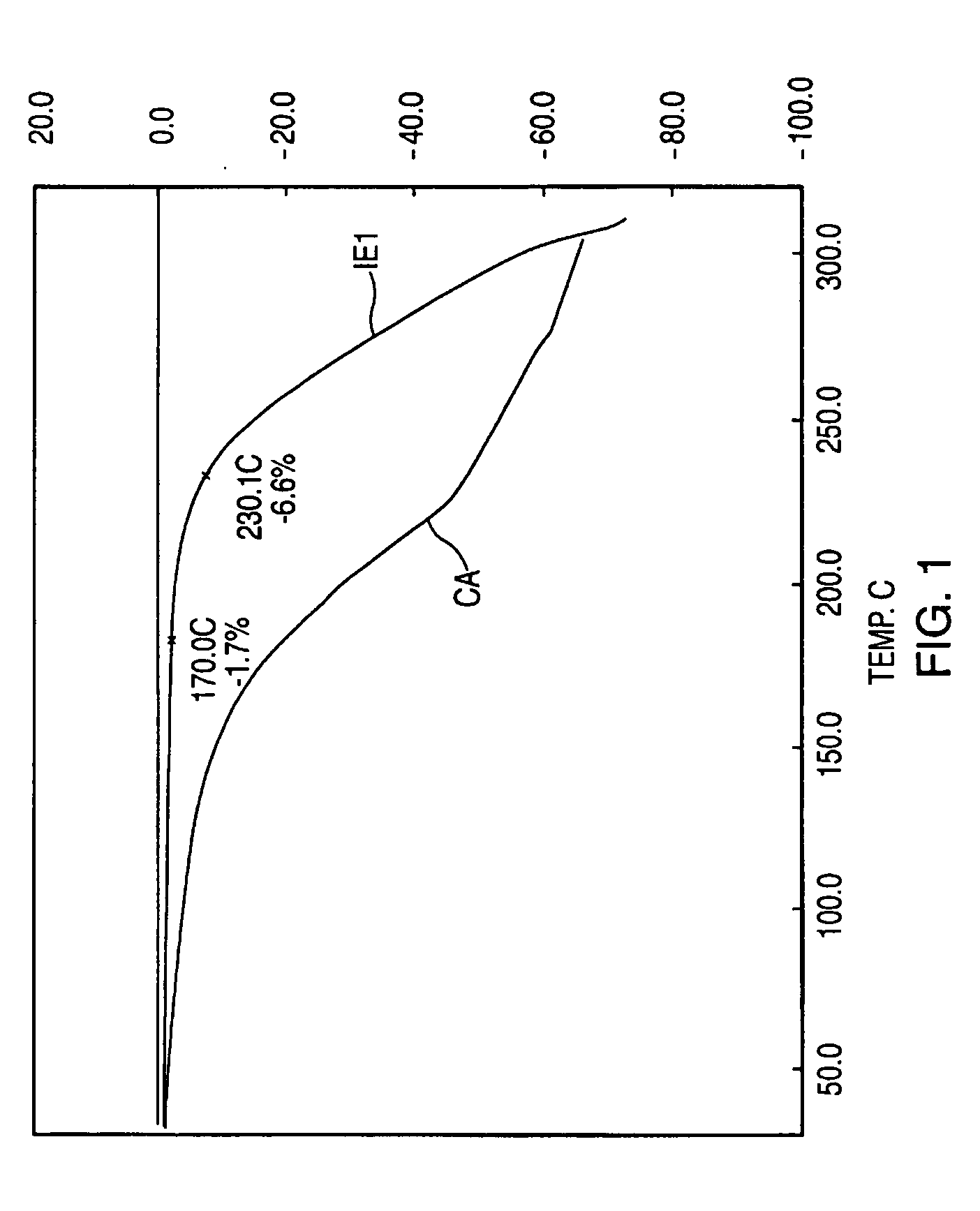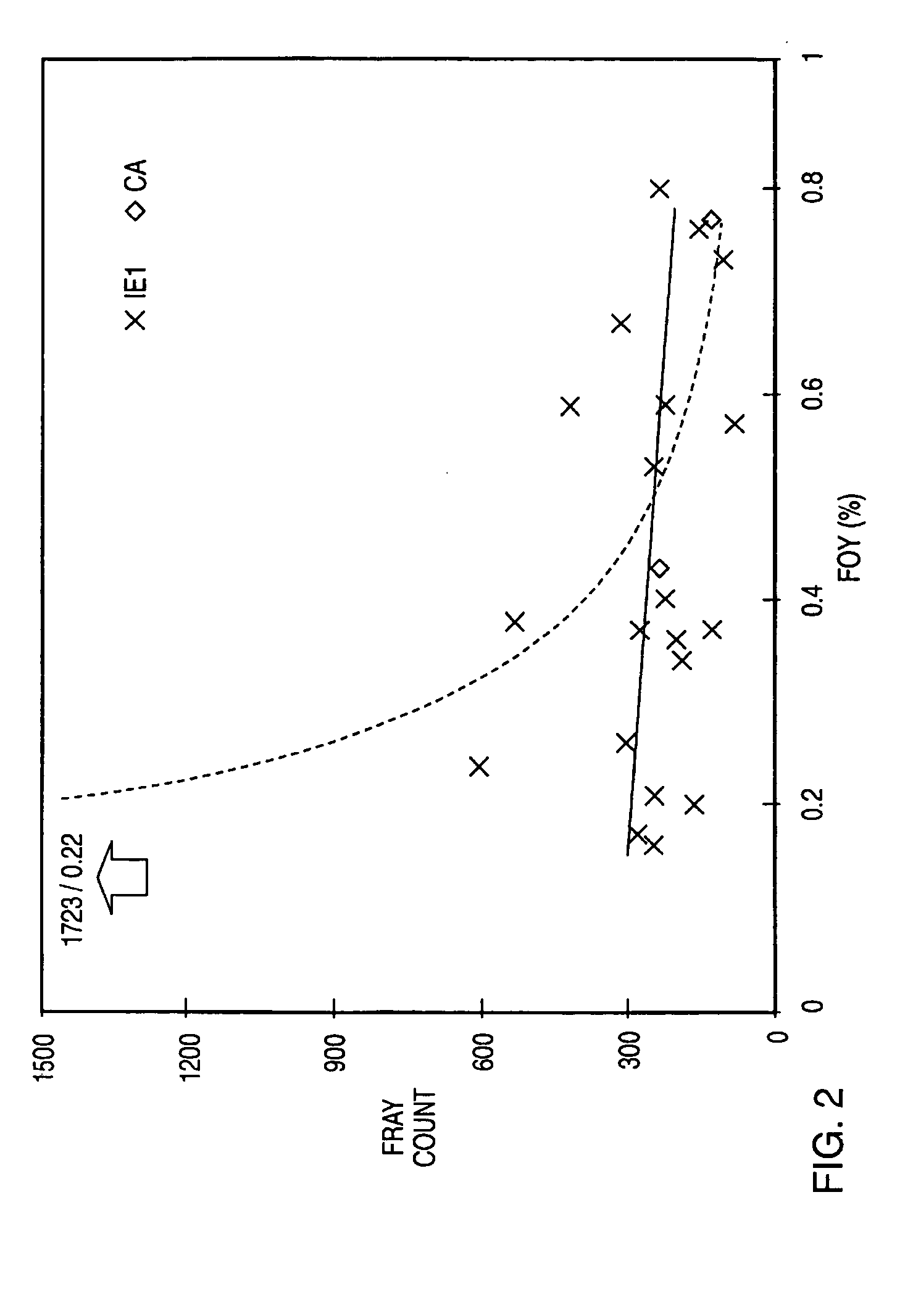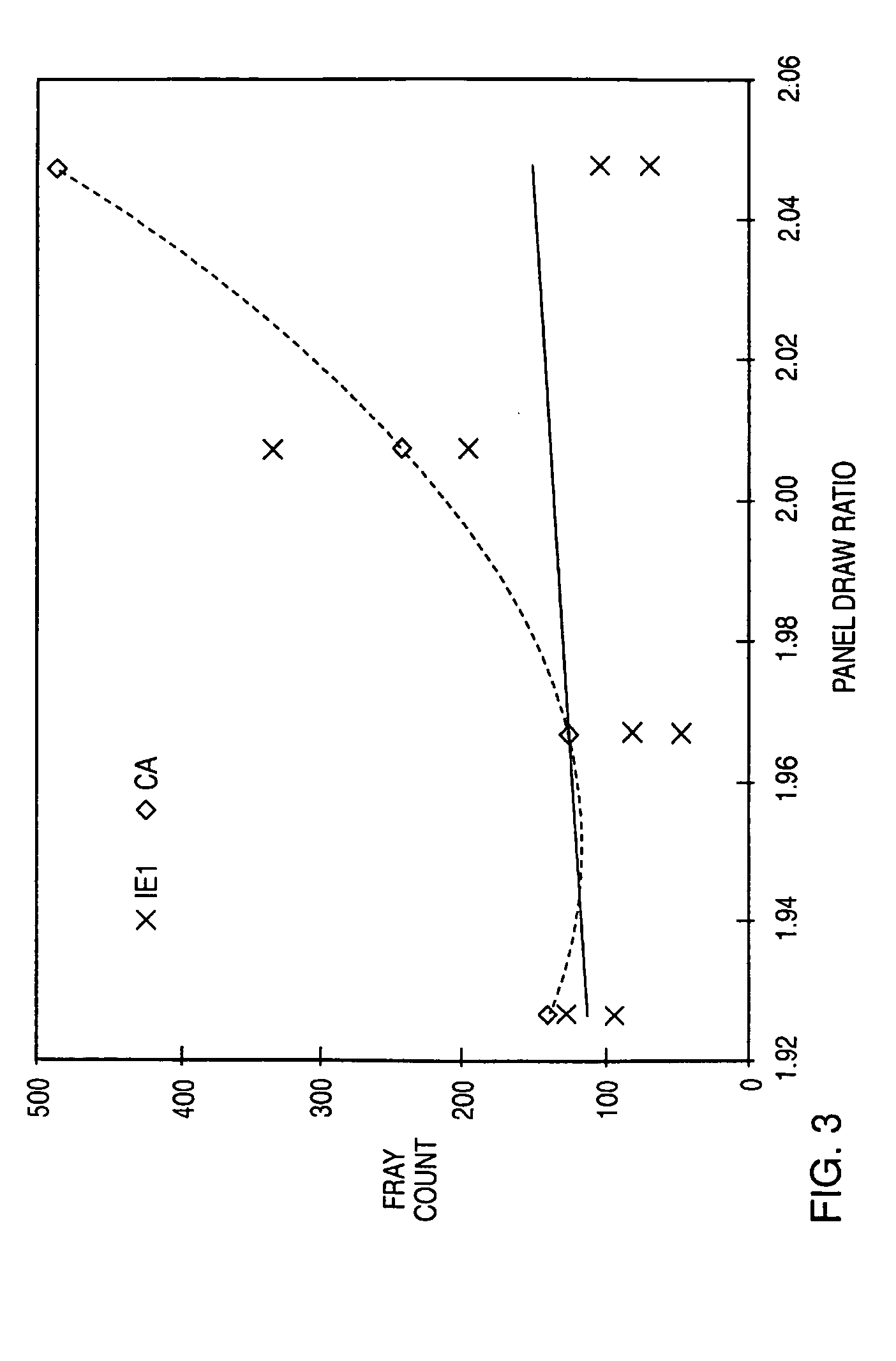Spin finish
a technology of spin finish and yarn, applied in the field of spin finish, can solve the problems of increasing the demands placed on the yarn finish to preserve the mechanical quality of yarn, the composition of the spin finish may be inadequate, and the process of manufacturing industrial yarns has become more demanding, so as to improve the mechanical quality, improve the processability of yarn, and reduce the effect of fum
- Summary
- Abstract
- Description
- Claims
- Application Information
AI Technical Summary
Benefits of technology
Problems solved by technology
Method used
Image
Examples
##ventive example 1
COMPARATIVE A AND INVENTIVE EXAMPLE 1
[0055] Comparative A was an industrial yarn spin finish composition taught by commonly assigned U.S. Pat. No. 3,672,977 and comprised 30 weight percent coconut oil; 13 weight percent ethoxylated lauryl alcohol; 10 weight percent sodium petroleum sulfonate; 5 weight percent ethoxylated tallow amine; 2 weight percent sulfonated succinic ester; and 40 weight percent mineral oil.
[0056] For Inventive Example 1, commercially available component (a) having the formula
R1—(CO)x—O—(CH(R2)—CH2—O)y—(CO)z—R3
[0057] as described in Table I below was used
TABLE IMWR1XR2YZR3950C4050% H / 50% CH34-160H
In an amount of 65 weight percent. In Table I, MW means molecular weight. Component (b) was a commercially available ethoxylated castor oil which contained components such as:
and was used in an amount of 25 weight percent. For component ( c), silicone was used in an amount of 5 weight percent. For component (d), dipentaerythritol hexapelargonate was used in an ...
##ventive example 2
INVENTIVE EXAMPLE 2
[0064] For Inventive Example 2, commercially available component (a) having the formula
R1—(CO)x—O—(CH(R2)—CH2—O)y—(CO)z—R3
[0065] as described in Table 11 below was used
TABLE IIMWR1XR2YZR3950C4050% H / 50% CH34-160H
[0066] In an amount of 5 weight percent. In Table II, MW means molecular weight. Component (b) was pentaerythritol ester and was used in an amount of 85 weight percent. For component (c), silicone was used in an amount of 5 weight percent. For component (d), dipentaerythritol hexapelargonate was used in an amount of 5 weight percent. The spin finish was applied in an amount of 0.6 weight percent to industrial polyester yarn. The tenacity of the yarn was 9 grams / denier.
PUM
| Property | Measurement | Unit |
|---|---|---|
| Newtonian melt viscosity | aaaaa | aaaaa |
| weight | aaaaa | aaaaa |
| weight | aaaaa | aaaaa |
Abstract
Description
Claims
Application Information
 Login to View More
Login to View More - R&D
- Intellectual Property
- Life Sciences
- Materials
- Tech Scout
- Unparalleled Data Quality
- Higher Quality Content
- 60% Fewer Hallucinations
Browse by: Latest US Patents, China's latest patents, Technical Efficacy Thesaurus, Application Domain, Technology Topic, Popular Technical Reports.
© 2025 PatSnap. All rights reserved.Legal|Privacy policy|Modern Slavery Act Transparency Statement|Sitemap|About US| Contact US: help@patsnap.com



